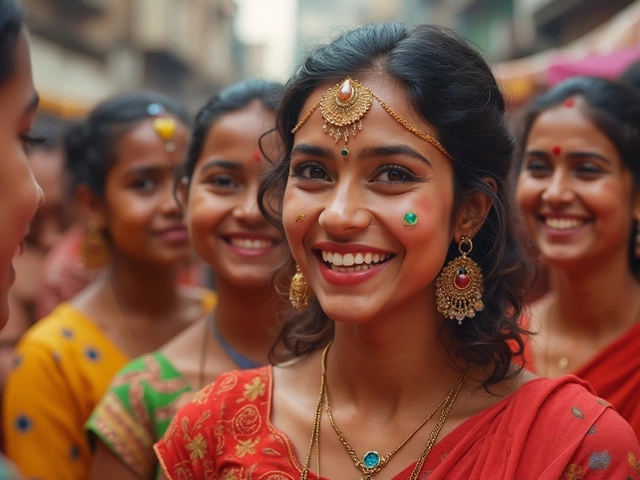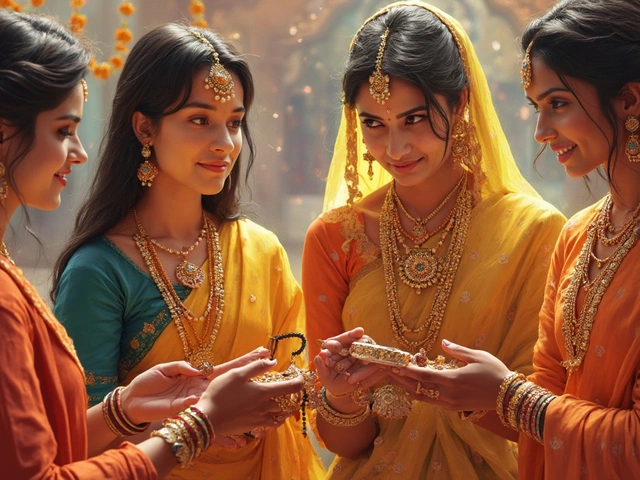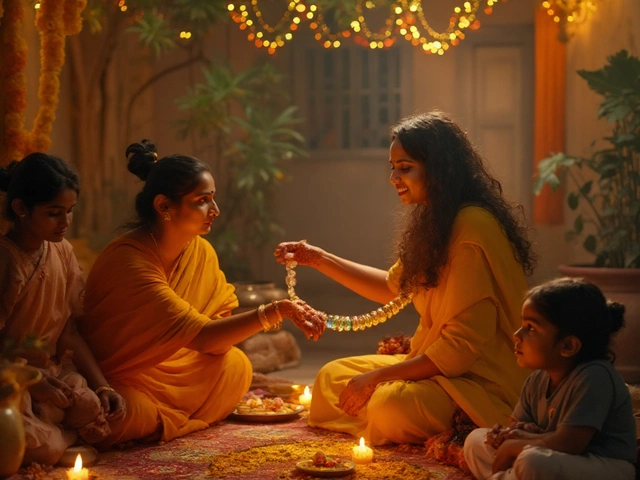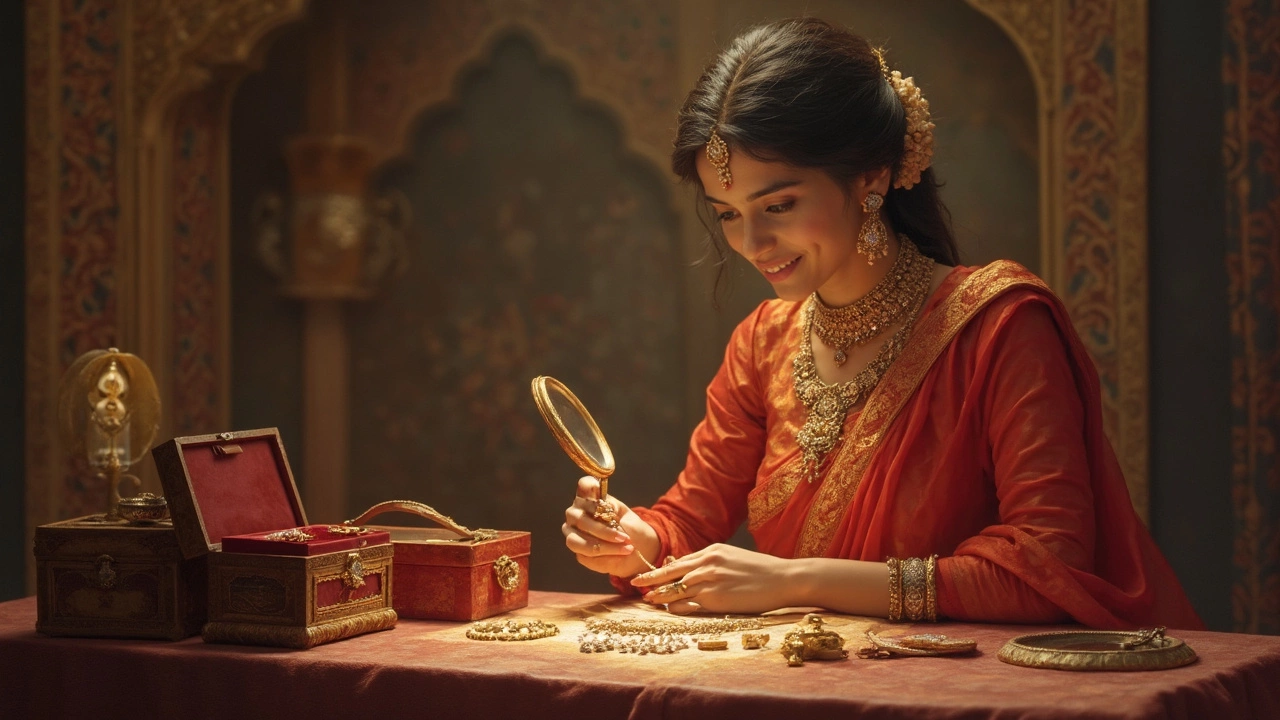
Saw a sparkling diamond ring in your grandmother’s jewellery box and wondered if it’s worth more because it’s old? Or maybe less? This is where it gets tricky—most people think diamonds are like classic cars or fine wine, gaining value with time. But diamonds aren’t always on the same track.
The plain truth is, diamonds themselves don’t get better (or worse) with age. A diamond from the 1800s and a similar one made last week are, chemically and physically, almost identical. It’s not like they soak up memories and add a price tag for every birthday they survive. So how come some old rings go for sky-high prices at auction?
The answer? It’s all about how buyers see things. When it comes to antique jewellery, stuff like rare designs, craftsmanship, or who used to own the piece might matter way more than just the diamond’s age. If you’re thinking about buying or selling an older diamond ring, you need to look past the myths and get familiar with what actually boosts or drags down value.
- How Diamond Value Is Judged
- Does Age Matter for Diamonds?
- Why Antique Jewellery Attracts Collectors
- Pitfalls and False Beliefs About Diamond Value
- Tips for Keeping and Selling Vintage Diamonds
How Diamond Value Is Judged
If you want to know why one diamond costs a fortune and another seems just okay, you need to start with the basics: the 4 Cs. These stand for carat, cut, color, and clarity. Almost every jeweller, auction house, or appraiser in the world uses this system to figure out a diamond’s price.
- Carat: This is just a fancy way of saying weight. The more a diamond weighs, the more valuable it usually is. A two-carat stone is often worth more than two one-carat stones of the same quality.
- Cut: This isn’t about shape. It’s about how well the diamond was cut and polished. A well-cut diamond bounces light around better, making it sparkle more. That can seriously bump up the price.
- Color: Most people think diamonds are colorless, but they actually come in different shades, from yellowish to icy white. The less color you see (unless it’s a rare fancy color), the higher the value.
- Clarity: Almost all diamonds have tiny spots or lines happening inside. The fewer flaws you can spot under a microscope, the pricier the stone.
The diamond value is mostly pinned down using these four things. But there are other factors, too. Certification matters—a diamond with a grading report from a trusted lab like GIA or IGI usually sells for more, just because you know what you’re getting.
| Factor | Big Impact on Value? | Average Price Difference* |
|---|---|---|
| Carat | Yes | Can double/triple per extra carat |
| Cut | Yes | Ideal cut can boost price by 35%+ |
| Color | Moderate | Top grades (D-F) up to 25% more |
| Clarity | Minor to Moderate | Flawless costs up to 40% more than SI |
| Certification | Yes | Up to 10% more if certified |
*Based on typical auction and retail margins, 2024 data
Also, don’t forget trends. If a certain shape or cut becomes hot (like oval or cushion cuts), prices can jump even for older stones. And provenance—where the diamond came from, or if it belonged to someone famous—can sometimes turn a modest stone into a headline-maker.
Does Age Matter for Diamonds?
So, here’s the real deal—diamonds themselves don’t change much over the years. They’re one of the hardest substances on earth and can survive millions of years without getting scratched up or fading. The diamond value is linked more to supply and demand, who owned it, and the piece’s overall style than the actual age of the stone.
Let’s squash the old rumor that old diamonds always mean big bucks. If a diamond was cut a hundred years ago but is chipped or yellowed, the market won’t pay extra just for its age. Modern buyers want good clarity, a sharp cut, and that unmistakable sparkle. But a well-kept antique diamond in a classic setting can draw huge interest, especially from collectors hunting something unique.
Jeffrey Post, the curator of gems at the Smithsonian, put it perfectly:
"Diamonds themselves don’t age or change in value just because they’re old. It’s the history, the craftsmanship, and sometimes the story behind antique pieces that create value beyond the stone itself."
It’s the context—who wore it, the era it’s from, or the brand behind it—that draws in collectors and drives prices up on old jewellery. For example, a regular round-cut diamond from 1920 isn’t suddenly priceless just because of its birthdate. But if it’s in an Art Deco setting and still gleams like new, that’s what collectors will pay big money for.
Here’s a quick snapshot showing what usually matters most:
| Factor | Impact on Value |
|---|---|
| Diamond Age | Low, unless it’s historically significant |
| Condition | High, especially if flawless |
| Cut Style | High for rare or old cuts |
| Setting/Design | Very high for vintage/antique artistry |
| Famous Ownership | Can skyrocket value |
If you’re eyeing an “old” diamond, don’t just ask how old it is—look for details like unique cuts from forgotten eras, hand-crafted settings, or the story behind it. That’s where age starts to matter, but mostly because of everything wrapped around that age, not the stone itself.
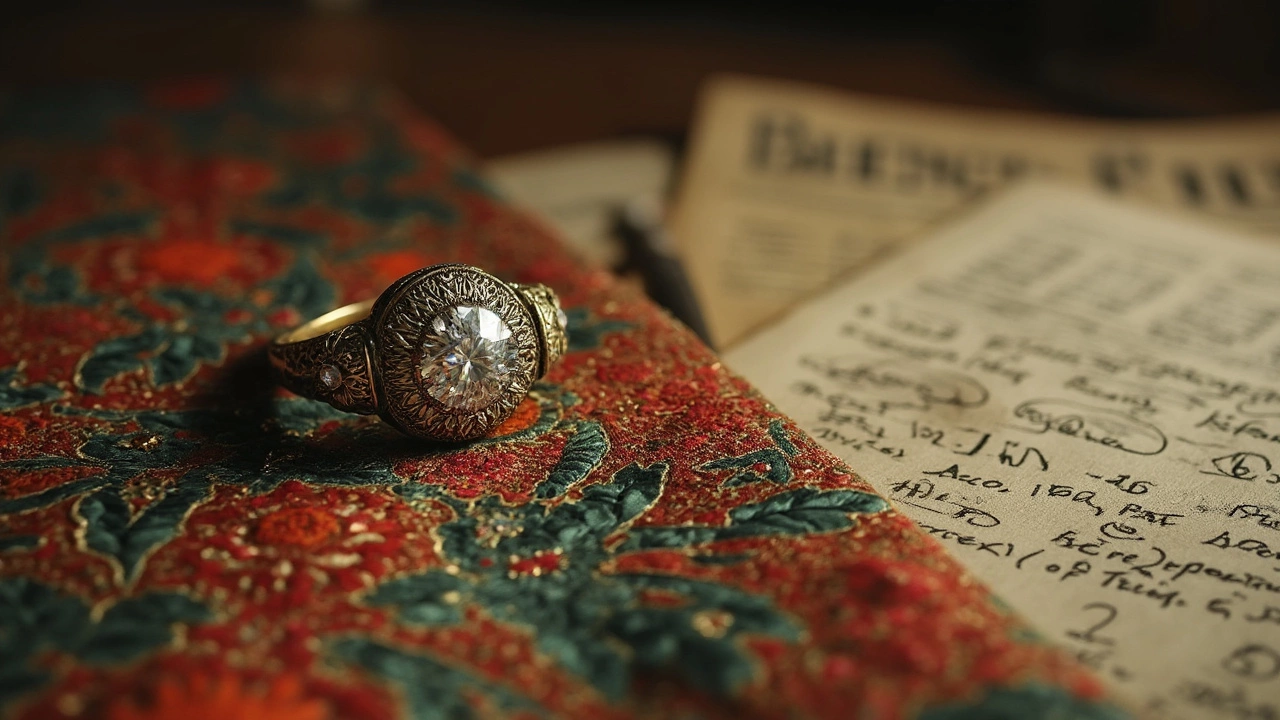
Why Antique Jewellery Attracts Collectors
Old jewellery isn’t just about the bling—collectors are drawn by stories, style, and a splash of history you can’t get from something brand new. It’s not just the age. It’s the unique designs, details, and materials that you just don’t see in modern pieces.
One big factor is craftsmanship. Even a simple diamond ring from the early 1900s often shows off handiwork you can’t find in today’s mass-produced stuff. Back then, jewellers put serious skill into hand-finishing pieces. So when folks talk about antique jewellery, they often mean time-tested quality and rare designs—think filigree settings, rose-cut diamonds, or platinum work done by hand.
Collectors also go mad for jewellery tied to a particular time period or design era. Victorian, Art Deco, and Edwardian pieces each have distinct looks. Even if the diamonds inside aren’t huge, those designs often crank up demand. Here’s a look at some design eras that excite collectors:
- Victorian (1837-1901): Nature-inspired motifs, yellow gold, and chunky settings.
- Edwardian (1901-1915): Light, lacy platinum designs, with old European cut diamonds.
- Art Deco (1920-1935): Bold, geometric shapes and bright contrasts, usually in white gold or platinum.
Rarity is another biggie. There are way fewer well-kept old rings than new ones. Original boxes, paperwork, or even knowing the person who originally owned a piece can make it way more valuable. Some pieces even link to celebrities or famous jewellers like Cartier or Tiffany, which pushes prices up even further.
| Design Era | Main Features | Market Popularity (%) |
|---|---|---|
| Victorian | Floral motifs, yellow gold | 22 |
| Edwardian | Lacy platinum, old-cut diamonds | 18 |
| Art Deco | Geometric, bold shapes | 35 |
| Other Eras | Retro, Mid-century | 25 |
Finally, the thrill of hunting for a rare or untouched piece appeals to many. Antique jewellery collectors aren’t just after diamonds; they’re looking for originality, backstory, and character—stuff you just don’t get in a new ring from the mall. This makes these vintage treasures worth it for more than just their carat size.
Pitfalls and False Beliefs About Diamond Value
There are a ton of myths floating around about what makes a diamond valuable. Some people think just having an old diamond automatically means it’s worth a fortune. But that’s not how the diamond market works. Let’s set the record straight with some proven facts and real-world examples.
First up, diamonds don’t ‘mature’ or become ‘rarer’ just by being old. Unlike wine or baseball cards, time itself doesn’t add value to a diamond. What buyers actually care about has more to do with the diamond’s quality, the jewellery’s style, or whether it’s tied to a famous person or event. You’ll see this when you check out prices at auctions—age alone almost never pushes the price up.
Another trap: thinking of diamonds as a great investment. According to a report from Bain & Company in 2023, the average resale value for a non-branded diamond ring at retail is usually 20-40% lower than the original purchase price. Fancy, branded antique rings can break the rule, but the little ‘investment’ diamond you bought in the 90s might fetch less than you expect if you head to a pawn shop.
| Common Myth | The Reality |
|---|---|
| Older diamonds are worth more just because of age | Value depends on cut, color, clarity, carat, and demand |
| Diamonds are a safe investment | Most fall in value after retail purchase |
| Antique settings always increase a diamond’s price | Only rare or sought-after designs see a boost |
One more thing: “antique” doesn’t always mean “rare.” Tons of Victorian and Edwardian diamond rings were made in the early 1900s. Unless you have a rare cut or a famous maker, don’t expect crazy offers based only on the period. The story behind the piece or unusual features make much more impact in today’s diamond value market.
If you’re thinking about selling or buying, watch out for stories and hype. Always ask for certification and real-world appraisals, not just a sweet sales pitch. Antique doesn’t guarantee a jackpot—facts and market trends say more about your diamond’s payout than its birthday ever can.
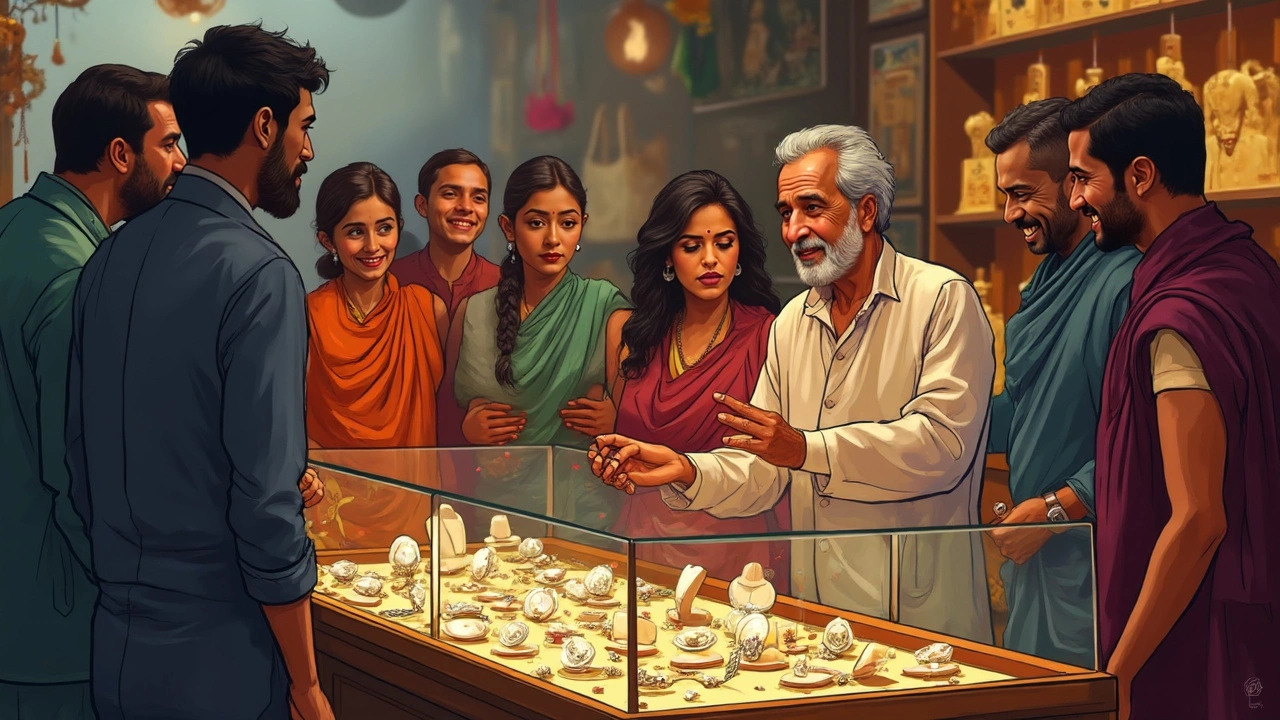
Tips for Keeping and Selling Vintage Diamonds
Keeping your vintage diamonds in good shape is all about simple habits. First, store your antique pieces in a soft-lined box, and don’t let them touch each other. Diamonds can scratch just about anything—including other diamonds. Skip the classic mistake of tossing all your jewellery into one bag.
Regular cleaning is key, but stay away from harsh chemicals, ultrasonic cleaners, or DIY tricks you’ve heard online. Many old settings—including silver or yellow gold—can get damaged fast. Go for a gentle soak with mild dish soap and a soft toothbrush. Seriously, my cat Whiskers makes less of a mess in the kitchen sink.
If you think your vintage diamond is worth real money, don’t just trust your gut—or family lore. Get it appraised by someone with credentials, like a certified gemologist. That way, you’ll have paperwork on the actual carat, color, clarity, and cut (the "4 Cs"). For insurance or selling, you’ll need a recent appraisal—prices change, and buyers want current info.
- Keep old receipts, original boxes, and paperwork. These make your piece more attractive to collectors.
- Don’t rush to polish old settings. Sometimes the ‘aged’ look is what buyers want. Over-restoring can zap value, especially with unique antique jewellery designs.
- Want to sell? Pick a selling method that fits your goals. Auction houses, antique jewellery dealers, and reputable online platforms all have pros and cons. Dealers move pieces faster but may offer less. Auctions can get you a big payday—if the right buyers show up.
One big mistake: expecting the diamond to be worth a fortune just because it’s old. According to a 2024 market report on diamond value, most vintage stones without special design, provenance, or top-tier quality sell for just 10–20% over their modern counterparts. Limited-edition designs, pieces from famous artists, or diamonds with a story do way better.
| Factor | Impact on Value |
|---|---|
| Original antique design | High — rare designs boost value |
| Stone quality (4 Cs) | Medium — quality still matters |
| Provenance | High — famous previous owners help a lot |
| Condition | High — damage or repairs lower value |
| Market demand | Medium — trends change what people pay |
So, treat each vintage diamond as unique. What worked for one sale is no guarantee for yours. Keep them clean, research before selling, and always double-check with a gemologist if you think you’ve found something special. That way, you’re not just at the mercy of luck or wild guesses.

